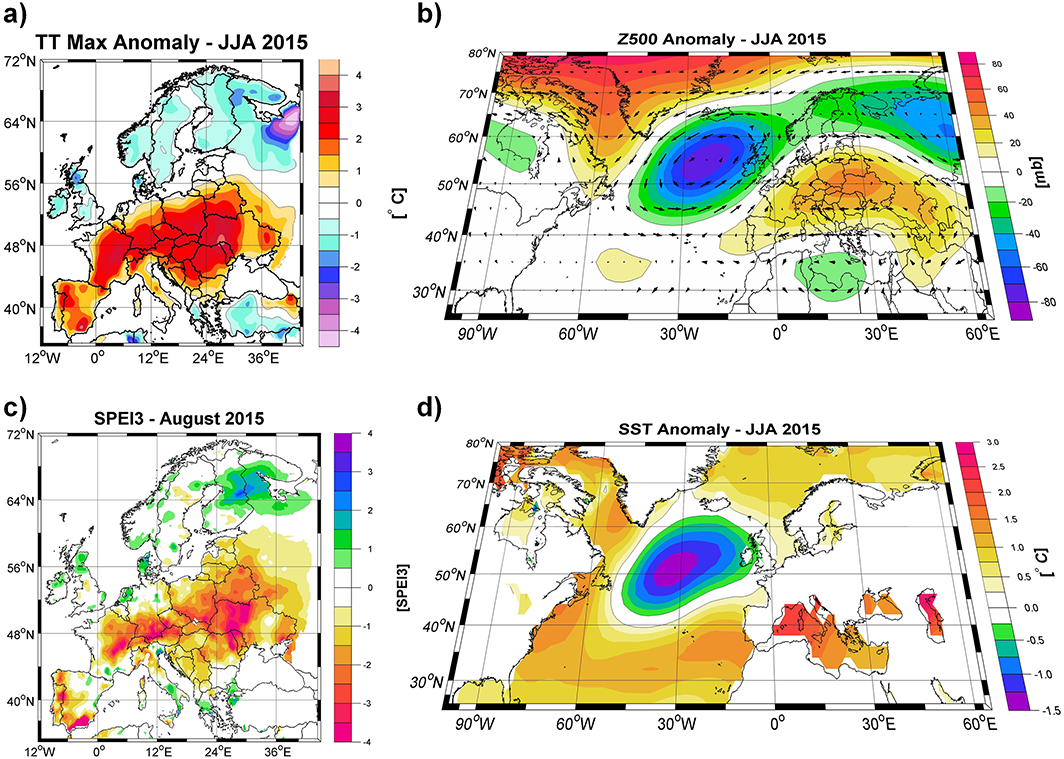
New Paper Published
Hydrology needed to manage droughts
Hydrology needed to manage droughts
Posted by Jim Stagge on March 15, 2016
Our new invited commentary, entitled “Hydrology needed to manage droughts: the 2015 European case” has been published as early online access in this month’s Hydrological Processes. This paper demonstrates the importance of integrating hydrologic data with meteorologic data when describing droughts, using the European 2015 drought as a case study.
You can find the full paper (open access) here:
van Lanen, H.A.J., Laaha, G., Kingston, D., Gauster, T., Ionita, M., Vidal, J.-P., Vlnas, R., Tallaksen, L.M., Stahl, K., Hannaford, J., Delus, C., Fendekova, M., Mediero, L., Prudhomme, C., Rets, E., Romanowicz, R., Gailliez, S., Wong, W.K., Adler, M.-J., Blauhut, V., Caillouet, L., Chelcea, S., Frolova, N., Gudmundsson, L., Hanel, M., Haslinger, K., Kireeva, M., Osuch, M., Sauquet, E., Van Loon, A.F., Stagge, J.H. (2016) "Hydrology needed to manage droughts: the 2015 European case" Hydrological Processes, 30: 3097–3104. doi: 10.1002/hyp.10838.
Abstract
It is generally accepted that drought is one of the most costly weather-related natural hazards. In 2015, a long-lasting drought hit Europe, particularly affecting central and eastern Europe. In some regions it was the driest (North Slovakia) and in others (Czech Republic and Poland) it was the second driest summer of the last 50 years (following 2003). Key questions are: (i) how extreme are these events, not only in terms of hydro-meteorological characteristics but also impacts? and (ii) how are these impacts managed?

Fig. 1. Reproduced from article.. Summer 2015: a) maximum temperature anomalies, E-OBS (Haylock et al., 2008), b) precipitation-evaporation anomalies, SPEI3 values; c) 500-hPa geopotential height anomalies, NCEP/NCAR reanalysis (Kalnay et al., 1996) and d) SST anomalies, ERSST v4 (Huang et al., 2014; Liu et al., 2014). The anomalies in panels a, c and d are computed relative to the period 1971 – 2000. The SPEI is calculated following Stagge et al. (2015). All variables are averaged over JJA